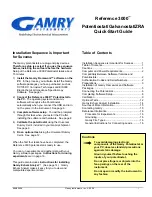
Concepts and Features
R&S
®
ZNC
50
User Manual 1173.9557.02 ─ 13
Examples for using wave quantities
The wave quantities provide the power at the different receive ports of the analyzer. This
is different from an S-parameter measurement, where the absolute power of a linear
device is cancelled. Wave quantities are therefore suitable for the following measurement
tasks:
●
Analysis of non-linearities of the DUT.
●
Use of the analyzer as a selective power meter.
To increase the accuracy or correct a possible attenuation in the source signal path,
it is recommended to perform a power calibration.
The notation for wave quantities includes the direction and the test port number. Addi-
tionally, the source port must be specified. The letter a indicates a transmitted wave, b a
received wave.
Examples:
●
a
1
Src Port 1 is the outgoing wave at test port 1. In a standard S-parameter mea-
surement, this wave is fed to the input port (port 1) of the DUT (forward measurement).
●
b
1
Src Port 1 is the incoming wave at test port 1. In a standard S-parameter mea-
surement, this is the reflected wave at port 1 of the DUT (forward measurement).
3.3.4.2
Ratios
A ratio measurement provides the complex ratio of any combination of transmitted or
received wave amplitudes. Ratios complement the S-parameter measurements, where
only ratios of the form b
i
/a
j
(ratio of the incoming wave to the outgoing wave at the test
ports i and j of the DUT) are considered.
Measurement Results
















































